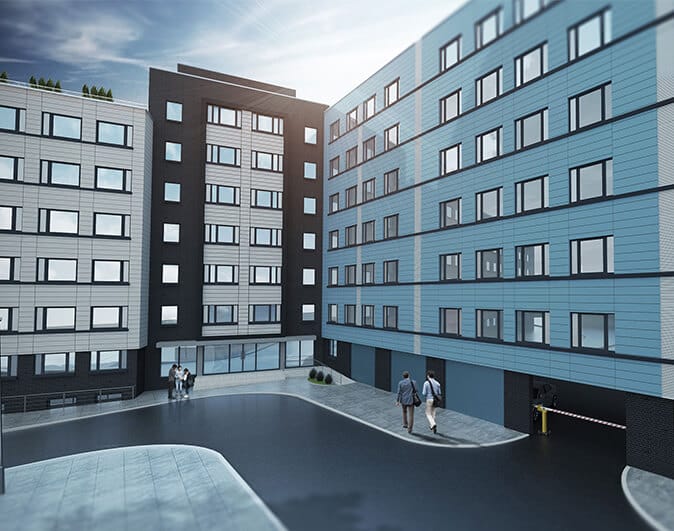Structural design. It’s one of those phrases that gets mentioned early in a project, then quickly disappears behind the scenes. And yet, whether you’re building a new home, extending a kitchen, or converting a loft, structural design plays a fundamental role in making sure the whole thing holds together—literally.
This article is intended for anyone who wants to understand what structural design is, why it matters, and how it contributes to a successful building project. You don’t need to be a technical expert. You need a solid grasp of the basics so that you can make confident, informed decisions as you move forward. Let’s start with the essentials.
What Exactly Is Structural Design?
In simple terms, structural design is the process of ensuring a building is safe, stable, and capable of withstanding the forces acting on it. Think of it as the skeleton of your building. Just as bones hold the human body upright and support movement, a building’s structural elements—beams, columns, floors, and foundations—work together to support everything from the roof down to the ground.
The role of a structural designer or engineer is to calculate the loads that the building will need to bear and determine how those loads travel through the structure. They then design each part to carry its share of the weight safely and efficiently.
That includes not only permanent or “dead” loads, such as the weight of materials and fixtures, but also live loads like people, furniture, and equipment. Environmental forces—such as wind, rain, snow, and ground movement—also play a role. Every structural decision is based on a balance of risk, efficiency, cost, material choice, and design intent. So, while you may not see these structural elements once the walls are plastered and painted, they are doing their job quietly every day.
Why It Matters More Than You Might Expect
The importance of structural design extends far beyond simply meeting compliance requirements. At its core, it’s about protecting lives and investments.
A poorly designed structure can lead to cracks, subsidence, sagging floors, and, in the worst cases, collapse. Even if nothing dramatic goes wrong, poor structural design can result in higher build costs, insurance issues, or rejections from Building Control.
Good design, on the other hand, ensures that the building is not only safe but also efficient. An innovative structural strategy can reduce the amount of steel or concrete required, avoid unnecessary delays, and provide builders with precise and reliable drawings that simplify the construction process.
In short, structural design is where creative vision and practical reality meet. Without it, even the most beautiful architectural concept can’t become a buildable, sustainable structure.
Who Needs Structural Design?
Many homeowners assume that structural design is only relevant for large-scale developments or commercial projects. The reality is quite different.
Any time you alter the load path of a building—that is, the way weight moves through the structure—you need to consider structural implications. That includes:
- Removing a load-bearing wall
- Adding an extension
- Converting a loft or basement
- Installing bi-fold doors or rooflights
- Creating open-plan spaces
- Building on sloped or unstable ground
If in doubt, ask. It’s much better to seek advice early than to encounter problems later. Structural issues discovered mid-project can lead to costly delays and redesigns. That’s why early consultation with a structural expert is not just helpful, but often essential.
How Structural Design Fits into Your Project
It’s helpful to think of structural design as part of a larger process that includes planning, architectural design, and construction. It does not operate in isolation. In fact, the best outcomes come when structural considerations are integrated from the start.
Here’s how it typically works:
Your architect or designer creates the initial layout and vision for the space. Once that vision is defined, a structural designer or engineer analyses how the building will support itself and what materials or techniques will be required. They work from the top down and the ground up, identifying how forces move through the structure and what reinforcements are needed.
The structural team then produces detailed drawings and calculations. These are submitted to Building Control for approval and used on site by contractors to ensure the building is constructed safely and correctly.
At Studio Charrette, we offer all of this under one roof, which means our clients don’t have to coordinate separate consultants or worry about miscommunication between disciplines. Our planning, architectural, and structural teams work in close collaboration, resulting in more coherent designs, faster approvals, and smoother builds.
Structural Design and Planning: What’s the Difference?
One of the most common misconceptions we encounter is the confusion between planning approval and structural approval.
Planning involves considerations such as a building’s appearance, its location on a site, its impact on neighbours, and whether it aligns with local policy. Structural design deals with ensuring the building will remain standing once it is built.
You can get planning permission for a stunning extension with glass walls and minimal supports, but that does not guarantee it can be built safely as drawn. This is why structural design is not something to leave until the last minute. If a structural solution proves to be too expensive or impractical, it may necessitate revisiting the design.
Getting structural input early often leads to a better, more realistic design that satisfies both aesthetic goals and construction requirements.
What Kind of Professional Do You Need?
Structural design is typically carried out by a structural engineer, although many architectural and design firms—ours included—have in-house structural teams that specialise in residential and small-scale commercial projects.
The key is to work with someone experienced in your type of project. A high-rise office tower and a domestic loft conversion are worlds apart in terms of scope and complexity, so make sure the person handling your structural work understands the practicalities of domestic construction.
At Studio Charrette, our team focuses on the kind of work that most homeowners and developers actually do: extensions, conversions, refurbishments, and mid-sized new builds. We tailor our approach to match your goals and budget, not just the rulebook.
What Will It Cost?
Costs vary depending on the size and complexity of your project. For a simple beam design to remove a wall, you might pay a few hundred pounds. A comprehensive structural package for a significant, multi-storey development will be more expensive.
We believe in transparency, so we always provide fixed-price quotes before starting work. Because we handle planning, design, and structural work together, we can often reduce duplication and avoid surprises.
It’s worth remembering that investing in good structural design often leads to long-term savings. Avoiding overengineering, preventing delays, and reducing the risk of Building Control rejections can result in significant benefits throughout the life of a project.
Why Choose Studio Charrette?
At Studio Charrette, we understand that structural design is not just about calculations. It’s about enabling your vision while protecting your investment. Our integrated service means you don’t have to juggle separate consultants or worry about gaps between planning and construction. We’ll guide you from initial idea through to sign-off with clear, pragmatic advice.
Our structural team is practical, responsive, and experienced. We don’t overcomplicate things. We work closely with you to ensure your project moves forward safely, legally, and without unnecessary costs.
We also understand that not every client is familiar with the language of load paths and shear forces. That’s why we take the time to explain what we’re doing and why—so you stay in control of your own project.
Thinking About a Project?
Whether you’re just starting to plan or already have drawings in hand, we’re happy to offer advice. We can help you understand what structural work might be needed and how to approach it in a cost-effective and practical way.
If you’d like to speak with one of our specialists, just get in touch. We offer free consultations and can typically provide a clear next step during your first call.


